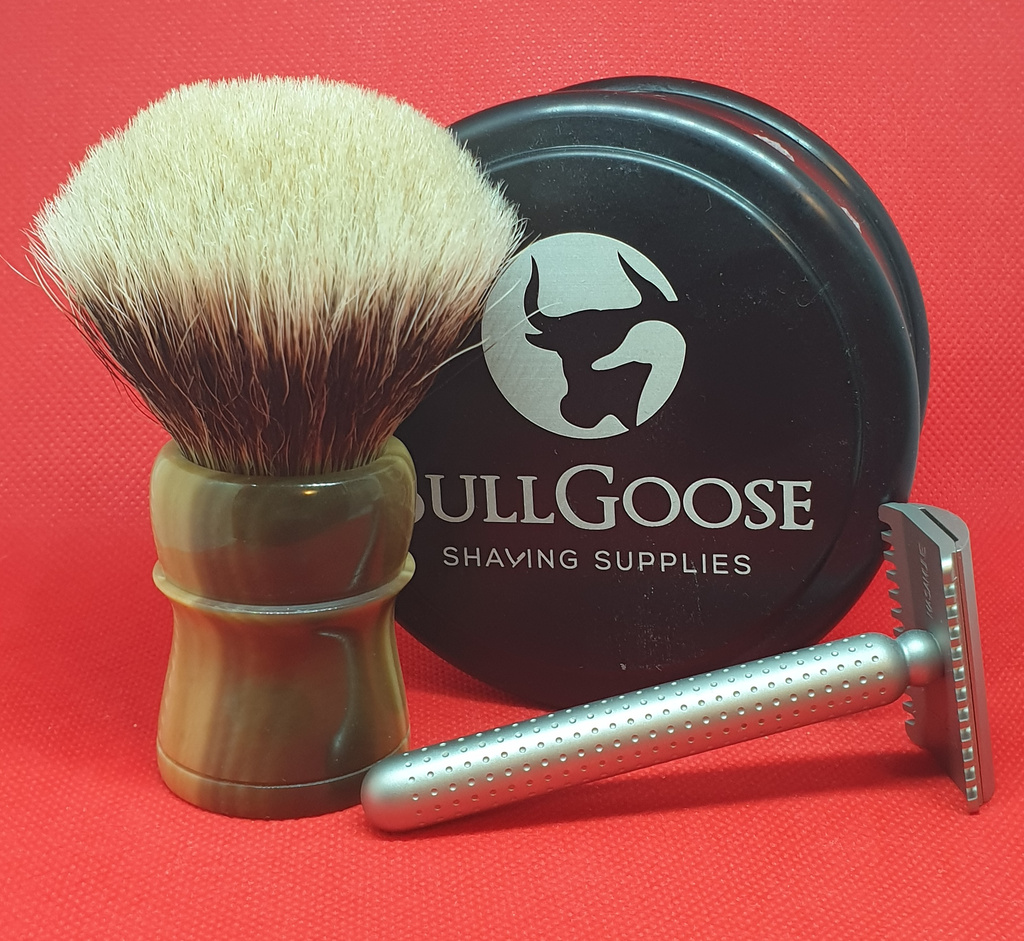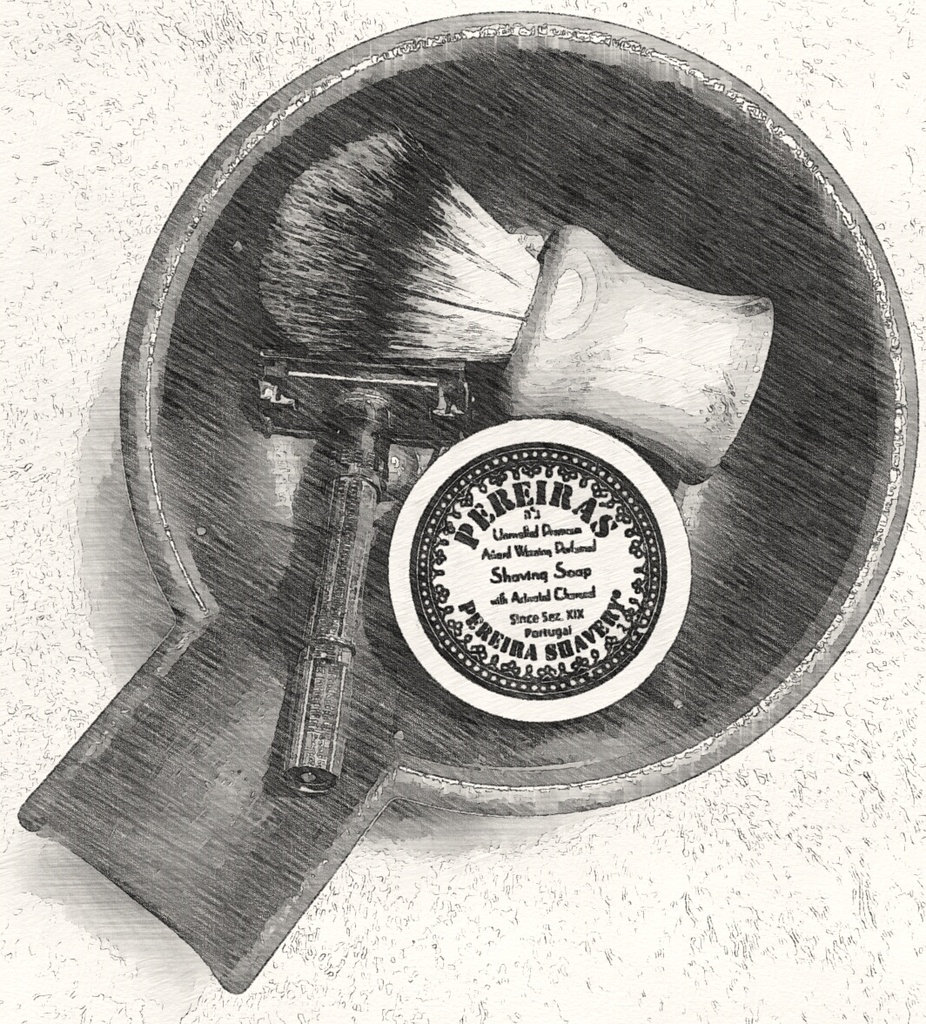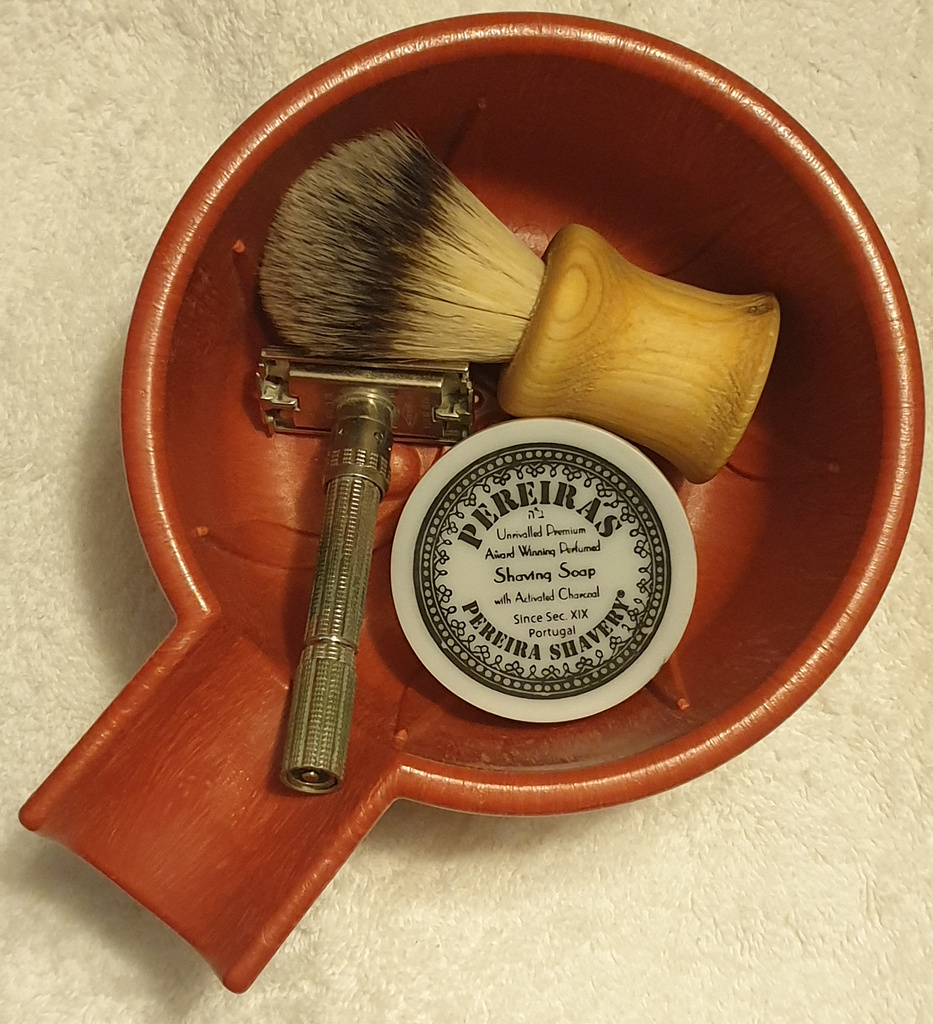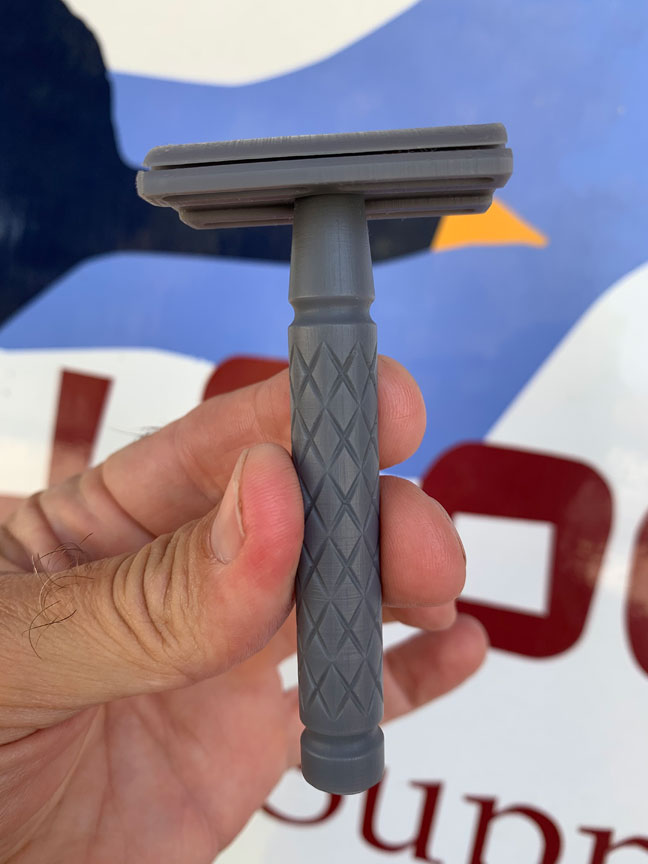Razor: Tatara Masamune
Blade: Feather Hi-Stainless
Brush: Semogue TSN LE 2012
Lather: Jabonman Mediterráno L.E. BullGoose
Aftershave: Barber No3 Marmara
Additional Care: Alum Block

Razor: Tatara Masamune
Blade: Feather Hi-Stainless
Brush: Semogue TSN LE 2012
Lather: Jabonman Mediterráno L.E. BullGoose
Aftershave: Barber No3 Marmara
Additional Care: Alum Block
The first part of the last century must been rough – so rough that the Shrp-Shavr Razor Company had to save on vowels in their name… And the razor they manufactured looks quite inexpensive too. It could probably be manufactured and sold today, as an inexpensive razor for travel, advertisers and an introduction to wetshaving.
Continue readingMy invention has for its object to provide a safety razor which shall be simple in construction, inexpensive in manufacture, and at the same time be strong and durable.
US patent 950,113
Razor: Tatara Masamune
Blade: Feather Hi-Stainless
Brush: Artesania Romera Manchurian Badger, imitation horn
Lather: Asylum Shave Works Colonia
Aftershave: Barber No3 Marmara
Additional Care: Alum Block

Razor: Gillette Slim
Blade: Feather Hi-Stainless
Brush: Brush Experimental Alpha
Lather: Williams Mug shaving soap
Aftershave: Barber No3 Marmara
Additional Care: Alum Block
The razors and blades model is a business model1 in which one item is sold at a low price in order to increase sales of a complementary good. Common variations today is printers-and-ink, consoles-and-games, and razors-and-cartridges.
There is a common myth that the business model originated with King Gillette. This myth is false – Gillette priced his early razors at 5 US dollars. This was equivalent to about approximately 145 US dollar in 2020… five times more expensive than the offerings from companies like Gem, EverReady and Christy. All three sold their razors for one dollar, while companies like CURBO even gave their razors away for free.
I am not – by far – the first one to notice this. Randal C. Picker of the University of Chicago Law School wrote a paper on the myth in 2010.2 The paper is an interesting take on disruptive technologies, and how patents influence business practices. Gillette didn’t start moving towards the razor and blade model until after the patent on the Gillette Old expired. One could argue Gillette wasn’t fully committed to the model until they introduced cartridges.
As described in the paper, EverReady and other low priced razors came much closer to the razor and blade model. Gillette seems to have implemented a monopolistic business model3 – costly razors and a single source of blades. This was not completely successful, since they did not have a monopoly on safety razors in general.To quote the paper:
Gillette’s business model—both its actual business model and its supposed razors-and-blades model—faced real competition and strong limits. The Ever-Ready and Gem Junior razor handles were implicitly priced at a very low price. Straight-blade shavers could try the new multi-blade approach with a minimal upfront investment and Gillette shavers could switch easily if Gillette blade prices were too high.
Picker, Randal C., The Razors-and-Blades Myth(s) (September 13, 2010). U of Chicago Law & Economics, Olin Working Paper No. 532, Available at SSRN: https://ssrn.com/abstract=1676444 or http://dx.doi.org/10.2139/ssrn.1676444
Keywords is minimal upfront investment. Today someone making the shift from cartridges to traditional wetshaving is more likely to buy a 30 dollar safety razor over a 150 dollar one. It must be assumed that the same held true 100-120 years ago. If the initial investment is lower, the barrier to entry is lower. This probably explains why so many inexpensive razors – Diamond Edge, Christy and even CURBO – stayed in production and use for such a long time
I strongly suggest reading the paper – or if time is of the essence, at least the article the author penned for the Harvard Business Review.
1) An in depth article can be found on Wikipedia.
2) You can read the abstract here, and also download the full thirty six page paper.
3) Once again, there is an article on Wikipedia.
Because reasons, that’s why…
A couple of years ago I posted about the Clemak safety razor. As British as Bulldogs and the British Army, the Clemak is covered by a British patent. I have no indications that a US patent was ever applied for. The Clemak was marketed as an inexpensive razor – why pay a guinea? – and the patent points to an important feature that made it economical in use:
The blade was self adjusting – so no matter how ground down it was, it would be pressed against the blade stop. In this way the shaver would not have to buy new blades all the time, but simply rehone and reuse the ones that came in the box.
Continue readingRazor: Gillette Slim
Blade: Feather Hi-Stainless
Brush: Brush Experimental Alpha
Lather: Pereira Oud
Aftershave: BullDog Sensitive Aftershave Balm
Additional Care: Alum Block


Razor: Gillette 1958 TV Special
Blade: Feather Hi-Stainless
Brush: Vie-Long #12705B
Lather: Dalane d’men Energenic
Aftershave: BullDog Original Aftershave Balm
SAE Type 630 stainless steel, commonly known as 17-4 PH, or simply 17-4. For the technically inclined, it’s a martensitic precipitation hardened stainless steel containing about 15–17.5% chromium and 3–5% nickel, as well as 3–5% copper. Machinability is comparable to 304 steel, but 17-4 is magnetic and combines high levels of strength, hardness and corrosion resistance. For the less technically inclined, all one really need to know is that it’s a good material for making stainless steel razors.
Which is probably a small part of the reason why Phil of BullGoose has picked it as the material for the new stainless steel razor he hopes to have out in time for the holidays. More on the backstory and the other reasons for picking 17-4 in this thread1 over on my favourite2 shaving forum, which is also where Phil shared a photo of the plastic prototype. I rather like the clean, classic lines of this upcoming razor.

1) Phil also posted about it on BullGoose, if you prefer reading it there.
2) Disclosure; I’m on the moderator team, so off course it’s my favorite.